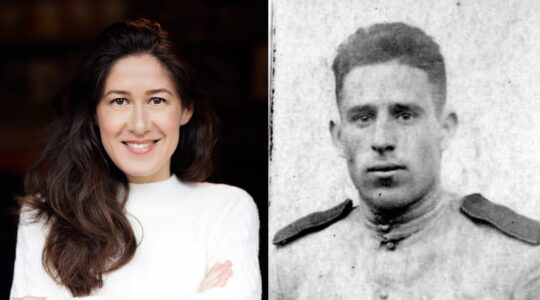In an inspired piece of programming, two neglected comedies will be screened back-to-back this Saturday at the American Museum of the Moving Image.
Both “Bye Bye Braverman” and “The Plot Against Harry” capture an unusual slice of Jewish life in outer-borough New York in the late 1960s, yet are largely unknown, overshadowed by the comedy of Woody Allen and the urban dramas of Martin Scorcese.
Though it was directed by Sidney Lumet and starred George Segal and Jack Warden, “Bye Bye Braverman” never found much of an audience when it was released in 1968. Moreover, it has not been transferred to video.
“The Plot Against Harry,” written and directed by Michael Roemer, wallowed for 20 years before premiering at the New York Film Festival in 1989, winning a few prizes in Europe and getting a limited theatrical release.
It, at least, can be found in videostores.
“People were much readier to laugh at Jewish subjects in 1990; there was much greater security in the Jewish community about it,” Roemer says of the late release of “The Plot Against Harry.” “The comedy is implicit rather than explicit. The film doesn’t announce itself as funny.”
When the museum decided to focus on New York for its annual series of films selected by members of the New York Film Critics Circle as a response to Sept. 11, The New York Times critic A.O. Scott and Journal-News critic Marshall Fine chose “Braverman” and “Harry” to share billing with “King Kong” and “Network.”
“ ‘Braverman’ is kind of a road movie set completely in the five boroughs,” says Fine. Growing up Jewish in the suburbs of Minnesota, Fine first saw the film as a high school senior and found its “intellectual Jewish humor popular of the late 60s” to be “new and familiar at the same time.”
He places “Braverman,” a tale of four middling Jewish intellectuals who crowd into a Beetle and drive to Brooklyn for the funeral of an old friend, in the middle range of Sidney Lumet’s large body of work. But the frenetic pace and wheezing performances present a comic, post-immigrant sensibility rarely captured on film. “It’s a document of its time,” Fine says.
A.O. Scott uses virtually the same words to describe his pick. “I love the feel of the movie,” he says of “The Plot Against Harry.” Filmed in black and white, its low-key comic approach “is not like any movie that I can think of.”
Shot on a shoestring with no stars, Roemer’s follow-up to his earnest civil rights drama “Nothing But a Man” is a naturalistic portrayal of small-time Jewish hoods and their boisterous mishpuchas, reminding Scott of his visits to Jewish relatives in 1970s Queens and Brooklyn. “There’s that warm, hectic, frantic lower-middle-class Jewish milieu that I have great fondness for.”
Lumet has repeatedly returned to New York during his long, celebrated career. Roemer has made only a few more feature films while teaching film at Yale since 1966. He’s ripe for a career retrospective, but wishes to avoid the spotlight. “Looking back is not one of my favorite memories,” says Roemer, who escaped Nazi Germany on the kindertransport.
But he does stand by his work and will appear at the screening Saturday. At the Brooklyn Jewish Film Festival in April, Roemer will also accept an award from the Anti-Defamation League for combating racism in “Nothing But a Man.”
“Bye Bye Braverman” screens at 2 p.m. and “The Plot Against Harry” at 4:30 p.m., Sat., March 16, at the American Museum of the Moving Image, 35 Avenue and 36 Street, Queens. (718) 784-4520. $8.50, $5.50.
The New York Jewish Week brings you the stories behind the headlines, keeping you connected to Jewish life in New York. Help sustain the reporting you trust by donating today.




